In pictures: Rodin exhibition
- Published

Leading 19th and 20th Century sculptor Auguste Rodin is being celebrated in a London exhibition of 30 of his bronzes, including some of his most-loved works and some that have never been seen in the UK before, such as a large version of The Prodigal Son, named in reference to the biblical parable from the Gospel of Luke.
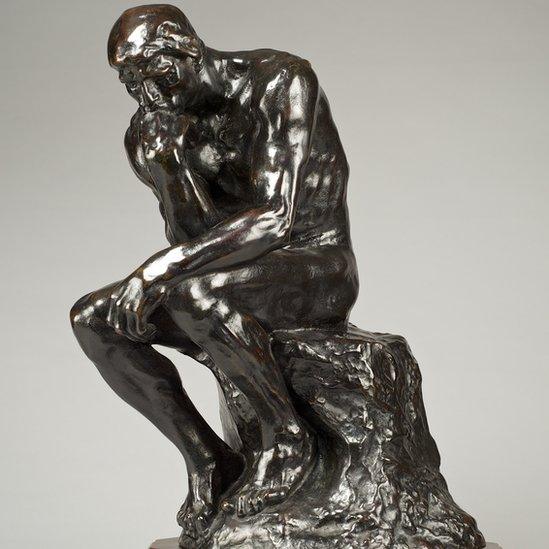
Rodin would make multiple versions and editions of particular sculptures and The Thinker is one such work. Its peaceful image represents one of Rodin's best-known conceptions and this particular piece is also making its debut appearance in the UK.
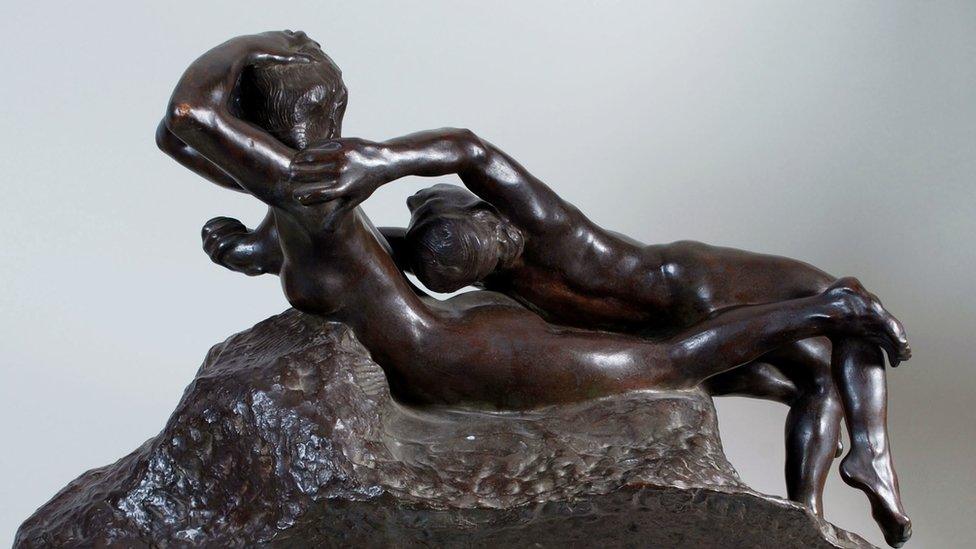
Fugit Amor is inspired by the story of Paolo and Francesca from Dante's Inferno, in which Francesca da Rimini and Paolo Malatesta are punished together in hell for their adultery - an illustration of Dante's exploration of the conflict between love and lust.
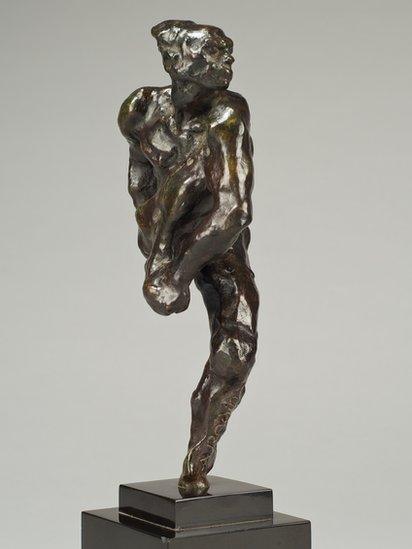
World famous dancer Vaslav Nijinsky is considered to have pushed the boundaries of ballet and propelled it into a new era of modernity. Rodin was one of many contemporary artists who admired Nijinsky and found him an inspiration to their work.
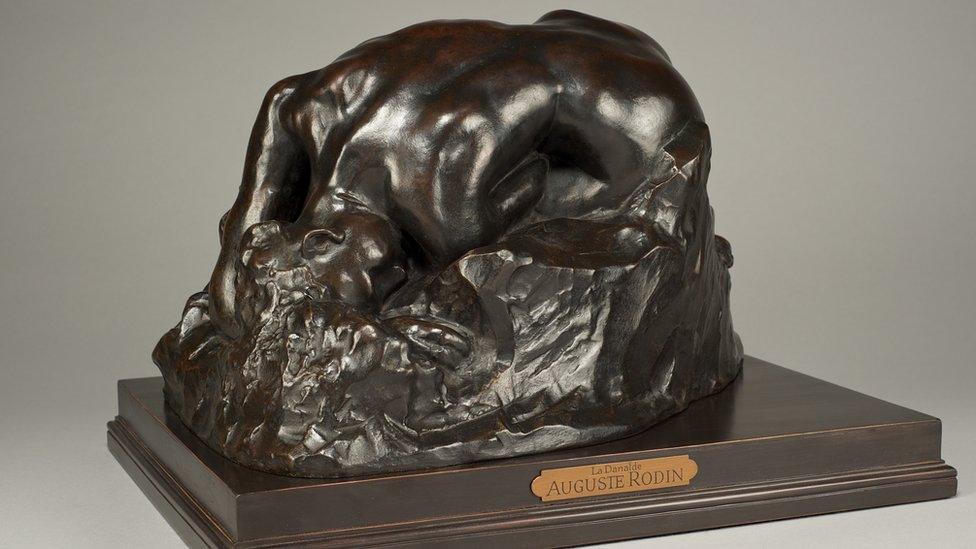
Rodin made a gift of La Danaide to his last great love, the Duchesse de Choiseul, a wealthy American heiress who married into the French aristocracy. Rodin and the duchess not only had a passionate affair but also one that became a powerful business relationship, as she took charge of his finances and subsequently made the sculptor very wealthy.

Along with the Thinker, The Kiss is synonymous with the name Rodin and considered one of the greatest depictions of romantic love in sculpture. At the time of its creation, the display of passionate love was revolutionary and was banned from some exhibitions in the fear it would incite the public to acts of lust. The work was again inspired by the story of Paolo and Francesca from Dante's Inferno.
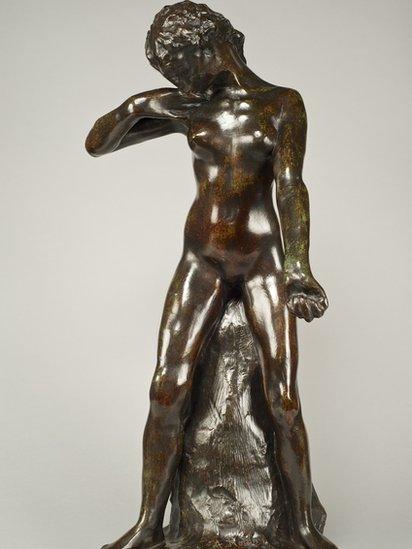
The exhibition includes a version of the Standing Fauness which also has never before been seen in the UK. Dante's conception of the fauness figure appears almost entirely human whereas in ancient mythology the creatures were usually depicted as half woman and half goat. Faunesses were known for their lustful nature and the eroticism of the Rodin work would not have been lost on his audience.
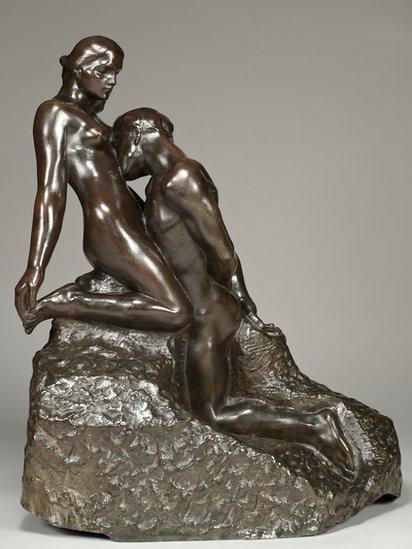
Another erotic piece is Eternal Idol, which is often seen as a depiction of tender adoration as the man holds his hands away in restraint. However, another interpretation is that it shows the man to be enslaved by his desire and therefore his lover's power over him.
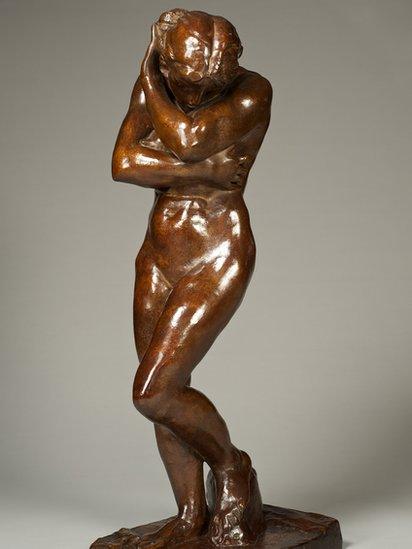
Rodin's Eve is considered one of the sculptor's most celebrated works, showing Eve after her temptation by the Devil, trying to hide herself as she realises she is naked. A life-size version of Eve had to be abandoned when Rodin became aware that his model was pregnant.
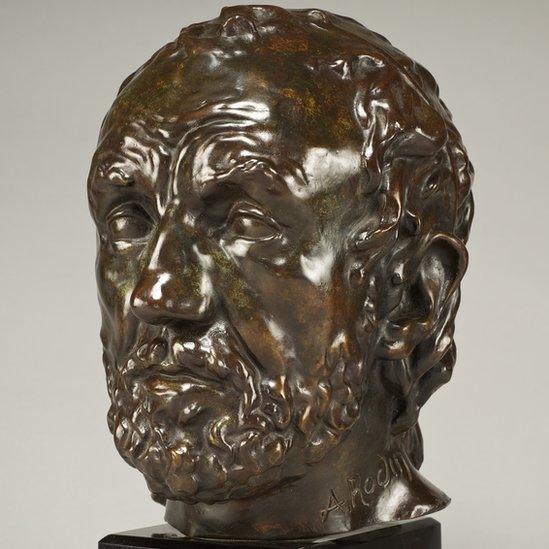
Rodin considered Man with a Broken Nose to be his earliest major work and described it as his first exceptional piece of modelling. It can be seen along with many more of the master sculptor's works in the exhibition Rodin - In Private Hands at Bowman Sculpture in London until 31 July.